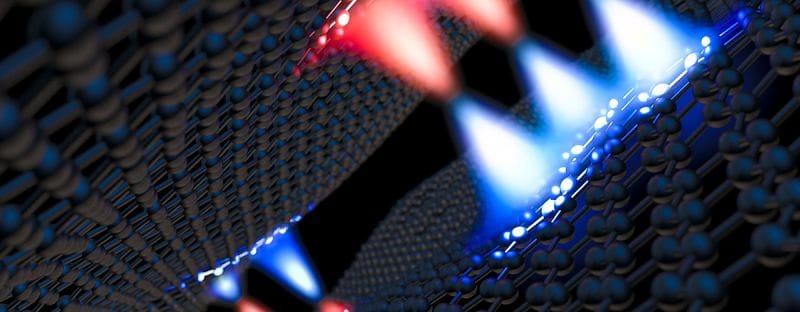RSS feed source: National Science Foundation
Funded by the U.S. National Science Foundation, scientists have accurately modeled particular cellular changes in Drosophila melanogaster, or the fruit fly, during embryonic development. When certain tissue shrinks dramatically to close a gap during the fruit fly embryo’s growth, the cells remain elastically solid rather than turning into a liquid form as expected. The model created by the researchers shows how this phenomenon happens and may lead to a new form of condensed matter physics with potential applications in neuroscience, biology and artificial intelligence.
The findings, published in Proceedings of the National Academy of Sciences, also revealed a surprising connection to the work that earned the 2024 Nobel Prize in physics.
“During the dorsal closure process, tissue, called amnioserosa, is shrinking like mad, and by all accounts, it should turn into a fluid,” says Andrea Liu, University of Pennsylvania theoretical physicist and author on the research. “But it doesn’t. The cells stay locked in place with their neighbors, and we wanted to understand why.”
RSS feed source: National Science Foundation
Postdoctoral Research Fellowships in Biology (PRFB) Administrative Guide | NSF – National Science Foundation
RSS feed source: National Science Foundation
In-brief analysis
April 8, 2025
In 2023, the United States produced 578 million short tons (MMst) of coal, or less than half of the amount produced in 2008 when U.S. coal production peaked, according to our most recent Annual Coal Report. The production decline is spread almost evenly across each type of coal and continued in 2024. Rising mining costs, increasingly stringent environmental regulations, and competition from other sources of electric power generation have contributed to domestic coal production declines.
The rank of coal depends on the depth at which coal deposits are buried. Deeper coal deposits have experienced more heat and pressure over time, providing those coals with higher heat capacity, higher carbon content, lower moisture, and fewer impurities. When ranked by their carbon content, the highest-ranking coal is anthracite, followed by bituminous, subbituminous, and lignite
Click this link to continue reading the article on the source website.
RSS feed source: National Science Foundation
Supported by the U.S. National Science Foundation, physicists have revealed the presence of a previously unobserved type of subatomic phenomenon called a fractional exciton. Their findings confirm theoretical predictions of a quasiparticle with unique quantum properties that behaves as though it is made of equal fractions of opposite electric charges bound together by mutual attraction.
The discovery was supported by NSF through multiple grants and laboratory work performed at the NSF National High Magnetic Field Laboratory in Tallahassee, Florida. The results are published in Nature and show potential for developing new ways to improve how information is stored and manipulated at the quantum level, which could lead to faster and more reliable quantum computers.
“Our findings point toward an entirely new class of quantum particles that carry no overall charge but follow unique quantum statistics,” says Jia Li, leader of the research team and associate professor of physics at Brown University. “The most exciting part is that this discovery unlocks a range of novel quantum phases of matter, presenting a new frontier for future research, deepening our understanding of fundamental physics and even opening up new possibilities in quantum computation.”
Li and his team were able to observe fractional excitons by using a phenomenon known as the fractional quantum Hall effect, which occurs when a strong magnetic field is applied to layers of atomically thin
Click this link to continue reading the article on the source website.



